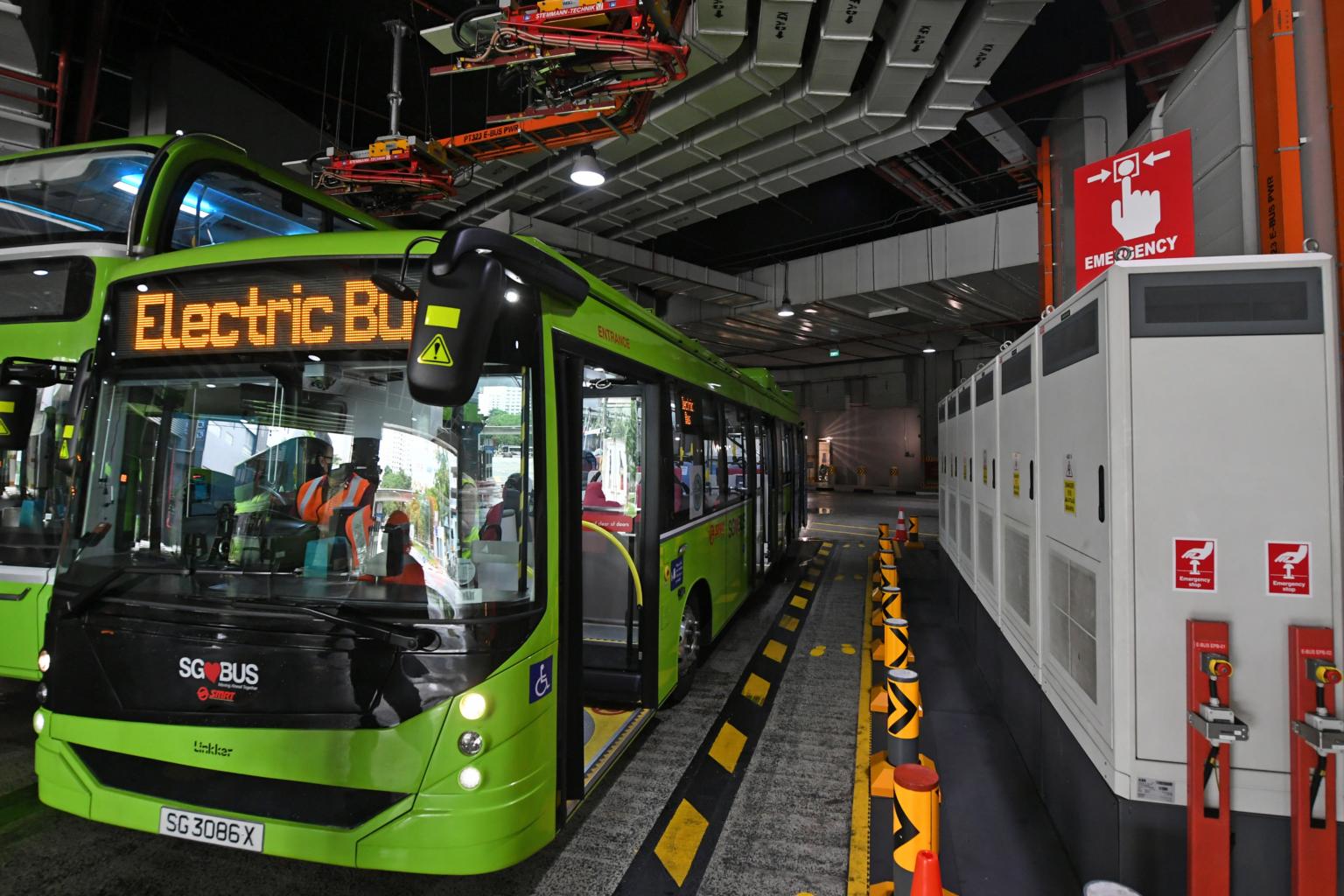20 fully electric public buses with faster charging to be deployed on Singapore roads
Sign up now: Get ST's newsletters delivered to your inbox

They are the final batch of electric buses to be deployed here out of a fleet of 60 electric buses that were bought by LTA in 2018.
ST PHOTO: DESMOND FOO
Follow topic:
SINGAPORE - Commuters can now catch a ride on the first fully electric three-door buses to ply the roads here.
Twenty of these new single-deck buses are being progressively deployed on routes served by services 38 and 40 run by SBS Transit from Bedok Interchange, as well as those served by services 176 and 976 operated by SMRT from Bukit Panjang Interchange, said the Land Transport Authority (LTA).
Some of the 20 buses hit the roads on Wednesday (Aug 25).
They are the final batch of electric buses to be deployed here out of a fleet of 60 electric buses that were bought by the LTA in 2018.
This is part of the longer-term goal for all of Singapore's 5,800 public buses to be run on cleaner energy by 2040. This includes electric and hybrid buses.
The 60 fully electric buses together are expected to reduce carbon dioxide emissions by close to 8,000 tonnes a year, equivalent to that generated by 1,700 cars.
The 20 new buses, supplied by ST Engineering Mobility Services, will be charged using faster overhead pantograph chargers installed at Bedok and Bukit Panjang bus interchanges.
An apparatus on the top of the bus connects to overhead electrical lines to recharge the batteries.
The other 40 electric buses use conventional plug-in chargers at bus depots.
The pantograph chargers have a power rating of up to 450kW, three to five times that of the plug-in chargers.
With the pantograph chargers, bus drivers will be able to charge their buses during the 10- to 15-minute layover time at the interchange and carry on with the rest of their routes. This can give drivers enough battery power for up to 48km.
It takes 30 minutes for the new buses to be fully charged, and they have a mileage of up to 130km per charge.
In contrast, the buses that use the plug-in chargers take two to four hours to charge and have a range of between 200km and 300km.
There are two pantograph chargers at each interchange.
They are mounted overhead at designated parking spaces and bus drivers can activate them using a button on their dashboards once they are parked in the right spot.
This will lower the connector and start the charging process.
The connector will retract automatically once the bus is fully charged. The drivers can also press a button to stop the charging process manually.
There are indicator lights at the charging berths to notify drivers of the charging status.
As a safety precaution, bus drivers need to engage the parking brake before charging and they cannot drive off while the bus is charging.

There are two pantograph chargers at each interchange.
PHOTO: ST
Speaking to the media on the sidelines of the launch of the new electric buses, Transport Minister S. Iswaran said the 40 electric buses that were progressively deployed since April last year have yielded good results.
They have led to a 50 per cent reduction in emissions compared with diesel buses - taking into account the emissions generated by the power grid - and 50 per cent fuel cost savings on a per-km basis.
"That alone is already significant and then you add to it the benefit in terms of noise reduction... This collectively has been a major part of the benefits going forward," he said.
The LTA said the electric buses generate about 75 decibels of noise, three decibels lower than typical Euro 6 diesel buses.
This means quieter journeys for commuters.
Mr Iswaran added that the LTA has also found that the electric buses in use have all performed to manufacturers' specifications.
"What it means is the initial effort with the electric buses has basically been performing to expectation. And that is good, because what it means is it can support our decisions for future procurement... and how much faster we can move on that with confidence about the technology and the overall infrastructure needed to support it."
The minister said the challenge with shifting Singapore's public buses towards cleaner energy models is that existing diesel buses have a certain lifespan and it would be wasteful to take them out of service too early.
While the number of electric buses used for public transport is small now, this is a key phase for the LTA, which Mr Iswaran said is in the midst of studying future procurements.
The new pantograph chargers will also allow the authorities to assess the different charging technologies available, the minister said, adding that a combination of these technologies may be used.


